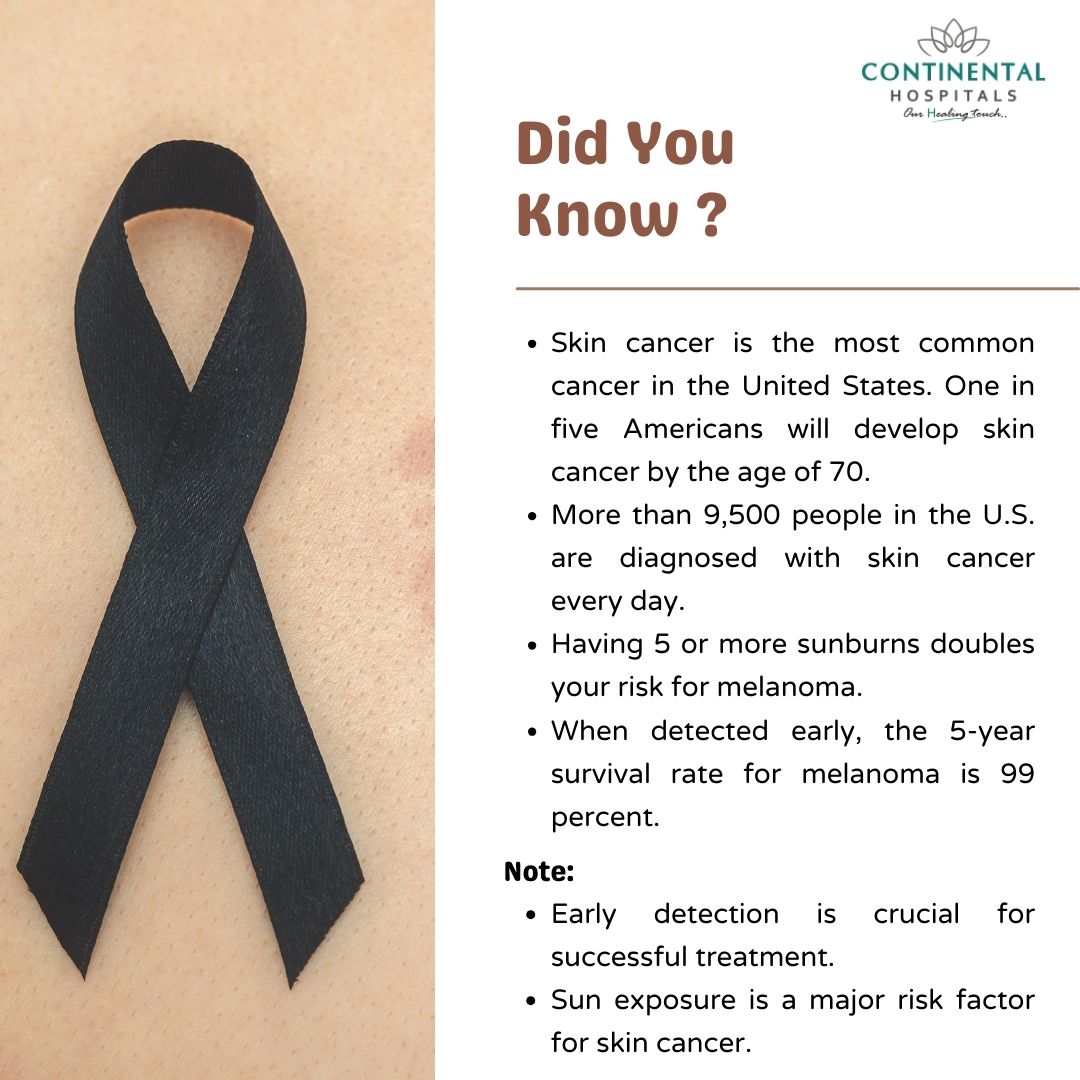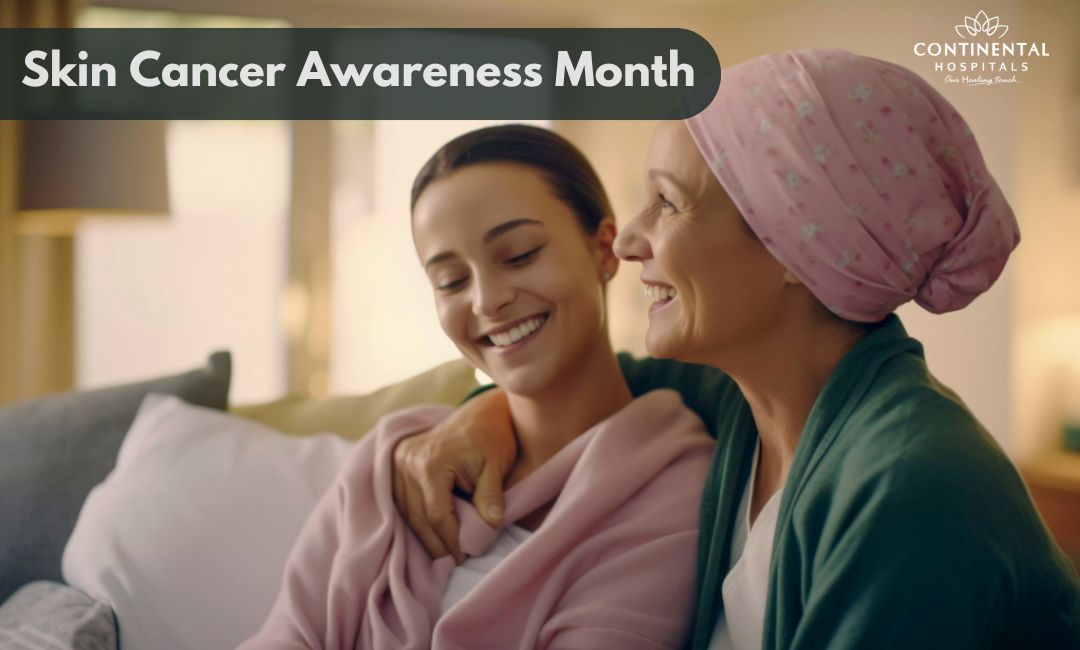May is designated as Skin Cancer Awareness Month, a time to educate ourselves and others about the risks, prevention strategies, and treatment options associated with this prevalent yet often preventable disease. Skin cancer is the most common form of cancer worldwide, but with proper awareness and proactive measures, its impact can be significantly reduced. In this comprehensive guide, we will delve into the various aspects of skin cancer, from its types and causes to prevention methods and available treatments.
Importance of Skin Cancer Awareness Month
Education and Awareness: Skin Cancer Awareness Month provides an opportunity to educate the public about the prevalence, risk factors, and warning signs of skin cancer. Many people may not be aware of the importance of sun protection or the need for regular skin examinations. By raising awareness, we empower individuals to take proactive steps to protect their skin and detect skin cancer early.
Prevention: Skin cancer is largely preventable through sun-safe behaviors such as wearing sunscreen, seeking shade, and avoiding tanning beds. Skin Cancer Awareness Month encourages people to adopt these preventive measures, ultimately reducing their risk of developing the disease. By promoting prevention strategies, we can make a significant impact on reducing the incidence of skin cancer.
Early Detection: Early detection is key to improving outcomes for individuals diagnosed with skin cancer. Regular self-examinations and professional skin screenings can help identify suspicious lesions in their earliest stages when treatment is most effective. Skin Cancer Awareness Month emphasizes the importance of early detection and encourages people to monitor their skin for changes that may indicate skin cancer.
🥗 Healthy Plate Challenge
🍽 Add Your Favorite Dish
Pick Your 6 favorite foods, eat, and see the results.Drag & drop foods onto your plate.
Drop Food Here
Support for Those Affected: Skin Cancer Awareness Month also serves as a platform to support individuals who have been affected by skin cancer, whether as patients, survivors, caregivers, or advocates. It fosters a sense of community and solidarity among those impacted by the disease, providing resources, information, and encouragement. Additionally, it highlights the importance of access to quality healthcare services and ongoing support for skin cancer patients and survivors.
Advocacy and Research: Skin Cancer Awareness Month drives advocacy efforts to prioritize skin cancer research, funding, and policy initiatives. It draws attention to the need for continued research into prevention strategies, treatment modalities, and advancements in skin cancer care. By advocating for increased awareness and resources, we can work towards reducing the burden of skin cancer and improving outcomes for those affected by the disease.

Types of Skin Cancer:
Skin cancer encompasses several types, each with distinct characteristics and treatment approaches. The three primary types are:
Basal Cell Carcinoma (BCC): BCC is the most prevalent form of skin cancer, typically appearing as a small, shiny bump or a red, scaly patch. While it rarely spreads to other parts of the body, prompt treatment is essential to prevent damage to surrounding tissues.
Squamous Cell Carcinoma (SCC): SCC manifests as a firm, red nodule or a flat sore with a scaly crust. Although less common than BCC, SCC has a higher potential to spread to other areas if left untreated. Early detection and treatment are crucial for preventing its progression.
Melanoma: Melanoma is the most dangerous type of skin cancer, arising from the pigment-producing cells known as melanocytes. It often appears as a new spot or a change in an existing mole, with irregular borders and variations in color. Melanoma can metastasize rapidly, making early diagnosis and intervention critical for improving outcomes.
Causes and Risk Factors:
Several factors contribute to the development of skin cancer, including:
UV Radiation: Prolonged exposure to ultraviolet (UV) radiation from the sun or artificial sources such as tanning beds increases the risk of skin cancer.
Fair Skin: Individuals with fair skin, light hair, and blue or green eyes are more susceptible to skin damage from UV radiation.
History of Sunburns: A history of severe sunburns, especially during childhood or adolescence, raises the risk of developing skin cancer later in life.
Family History: Genetics plays a role in skin cancer risk, with a family history of the disease increasing the likelihood of developing it.
Immunosuppression: People with weakened immune systems, such as organ transplant recipients or those with certain medical conditions, have a higher risk of developing skin cancer.
Prevention Strategies:
Prevention is key to reducing the incidence of skin cancer. Here are some effective strategies to protect your skin:
Sun Protection: Limit exposure to the sun, especially during peak hours between 10 a.m. and 4 p.m. Wear protective clothing, including wide-brimmed hats and sunglasses, and use broad-spectrum sunscreen with SPF 30 or higher.
Seek Shade: When outdoors, seek shade under trees, umbrellas, or other structures to minimize direct sunlight exposure.
Avoid Tanning Beds: Refrain from using tanning beds, as they emit harmful UV radiation that increases the risk of skin cancer.
Perform Self-Examinations: Regularly examine your skin for any changes in moles, freckles, or other lesions. Report any suspicious growths to a dermatologist promptly.
Early Detection and Screening:
Regular skin examinations are essential for detecting skin cancer in its early stages when treatment is most effective. Dermatologists can perform thorough examinations of the skin, identify suspicious lesions, and perform biopsies if necessary. Additionally, individuals should become familiar with the ABCDEs of melanoma:
Asymmetry: One half of the mole doesn't match the other.
Border: The edges are irregular, notched, or blurred.
Color: Uneven pigmentation with variations of brown, black, tan, red, blue, or white.
Diameter: Greater than 6 millimeters (about the size of a pencil eraser).
Evolving: Changes in size, shape, or color over time.
If any of these warning signs are present, seek medical attention promptly for further evaluation.
Treatment Options:
Treatment for skin cancer depends on the type, size, location, and stage of the disease. Common treatment modalities include:
Surgical Excision: The removal of the cancerous lesion and a margin of surrounding healthy tissue to ensure complete eradication of the tumor.
Mohs Surgery: A specialized surgical technique that involves removing thin layers of skin one at a time and examining them under a microscope until no cancerous cells remain.
Radiation Therapy: The use of high-energy radiation to destroy cancer cells and shrink tumors.
Chemotherapy: The administration of drugs to kill cancer cells or prevent their growth and spread.
Immunotherapy: A treatment that harnesses the body's immune system to target and destroy cancer cells.
Skin Cancer Awareness Month serves as a reminder of the importance of prioritizing skin health and taking proactive steps to prevent and detect skin cancer early. By adopting sun-safe behaviors, staying vigilant for changes in the skin, and seeking timely medical attention, we can reduce the burden of this disease and improve outcomes for those affected. Let us work together to raise awareness, promote prevention, and support research efforts aimed at combating skin cancer.
Consult with an Oncologist who can help you understand the benefits of early detection of cancer or you can also contact us at Continental Cancer Centre Hot Line Number - +91 96019 66666
Related Blog Topics:
1. What Is Cancer? Symptoms, Signs, Types & Causes
2. Early Detection Tips for Common Cancers
.webp)














